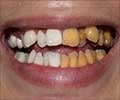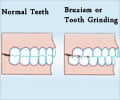Data about dental cavities and periodontal disease among the adult population in the Valencia region have been revealed for the first time in a new study.

The study, published in the journal Medicina Oral, Patología Oral y Cirugía Bucal, for the first time provides data about the situation with regard to cavities, periodontal disease, oral treatment requirements and the use of dental prostheses in two age cohorts (35-44 and 65-74) in the adult population of Valencia. The study also includes an analysis of these people's oral hygiene habits.
The prevalence of cavities was above 90% in the two samples studies. Social class and educational levels have an impact on the presence of cavities, with those with lower social and education levels having more cavities. Nationality also has an impact, with foreigners having more untreated cavities.
Among the people aged 65 to 74, 20.7% are 'totally toothless'. "From these data we can deduce that the dental status of the institutionalised geriatric population is significantly worse than that of elderly adults living in their homes", says Almerich.
In terms of periodontal disease, the second most prevalent problem, the most disadvantaged social classes again present the worst health status, while the need for dental prostheses fluctuates between 20-35% for the entire population studied, increasing in the older age group.
Bad habits starting in childhood
Advertisement
The findings of this study underline the need to improve dental care among adults. The authors highlight the need to develop new policies that will improve prevention as well as dental care measures "that will make it possible to improve the bucodental map within a few years".
Advertisement
Source-Eurekalert










